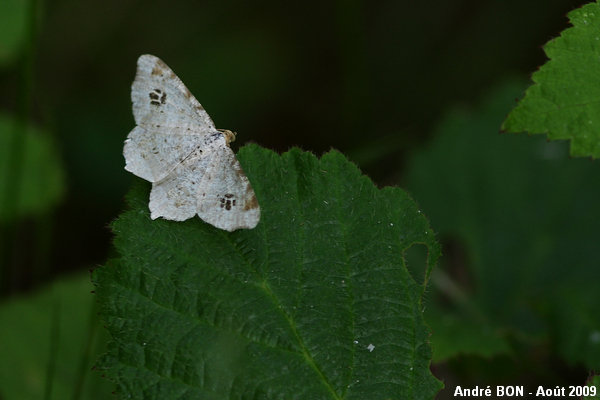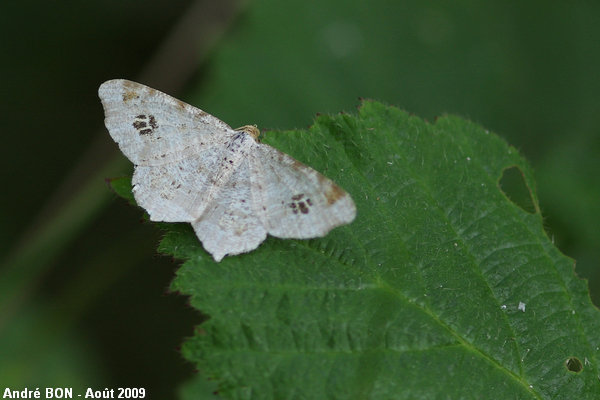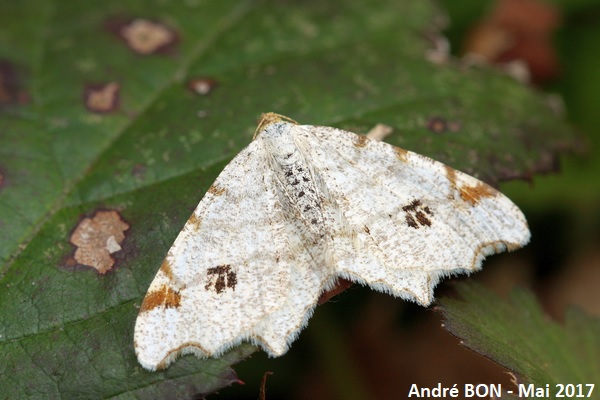


| Peacock Moth (Macaria notata (Linnaeus, 1758)) |



|
|
Scientific name: Macaria notata (Linnaeus, 1758) Common name: Peacock Moth Other names: Other scientific name: Semiothisa notata. French name: Philobie tachetée Order: Lepidoptera Suborder: Heterocera Family: Geometridae Subfamily: Ennominae Wingspan: 28-32 mm. Biotope: Forests. Geographic area: Europe, temperate and northern Asia, North America. Flight time: May to June, then August to early October. Number of generations : 2 Caterpillar: Greenish brown with a dark dorsal stripe. Host plant: Willow (Salix), Birch (Betula), Alder (Alnus), Oak (Quercus). |
The Peacock Moth has white wings crossed by more or less marked greyish transversal lines. There is a series of reddish brown patches on the costal edge of the fore wings. The largest one is close to the apex. There is a black discal patch divided into several parts on each fore wing. There is also a greyish notch at the margin of the fore wing close to the apex. The hind wings are angulous. There is a similar species, the Sharp-angled Peacock (Macaria alternata). This last one generally shows a smaller discal spot. The small costal spot preceding the larger spot close to the apex is small and very dark. This spot is larger and more diffuse on the Peacock Moth (Macaria notata). The notch close to the apex is deeper on the Sharp-angled Peacock and edged with black. The outer edge of this notch is paler on the Peacock Moth. More difficult to see, the Sharp-angled Peacock's hind wings are crossed by a broad grey stripe while there are only thin lines on the Peacock Moth. The Peacock Moth over winters as a pupa. |
| [To know more about the Peacock Moth] [Next picture] [Top] |

|
I have observed this peacock Moth in a forest. I have only been able to approach it after several tries. |
| [To know more about the Peacock Moth] [Next picture] [Previous picture] [Top] |

|
The notch close to the apex is not very deep and edged with grey. The spots on the costal edge are a rather pale colour. Everything matches to tell this species apart as the Peacock Moth (Macaria Notata). |
| [To know more about the Peacock Moth] [Previous picture] [Top] |

|
Here is a close-up of a moth of the first annual brood. You can see a small part of the hindwings and the beginning of the thin greyish-brown lines crossing them. |